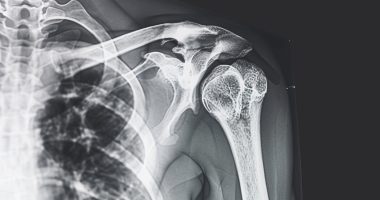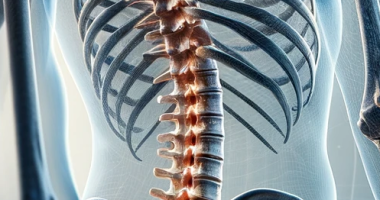Cystic lung disease
Definition
Cystic lung disease is a congenital or acquired pathology of the respiratory system characterized by underdevelopment of alveolar tissue and vascular network in combination with cyst-like dilatations of distal bronchioles and/or subsegmental bronchi. It is manifested by persistent cough with expectoration of sputum, recurrent purulent-inflammatory processes in the cystic-altered area of the lungs, signs of chronic intoxication, and respiratory failure. Diagnosed with the help of radiation and endoscopic methods of examination of the respiratory tract. The radical treatment is surgical removal of the affected part of the lung.
General information
Cystic hypoplasia (polycystic, congenital cystic malformation, cystic-adenomatous malformation) of the lungs ranks first among all anomalies of the bronchopulmonary system by frequency of occurrence. According to modern authors of medical articles on pulmonology, this pathology is detected in 9-14 cases per 100,000 newborns; its specific weight among congenital malformations of the respiratory system is 60-80%. In 4-30% of patients, cystic hypoplasia of one lung is combined with agenesis of the second lung, tracheoesophageal fistulas, diaphragmatic hernia, as well as abnormalities of other organs and systems. The malformation is more often detected in males. Cases of familial polycystic lung disease have been described.
Causes
The causes of primary polycystic kidney disease are not well understood. Mothers of newborns with this malformation are usually healthy, and the infants have no other congenital defects. Secondary hypoplasia develops against the background of the following pregnancy abnormalities and fetal anomalies:
- Reduced volume of the thoracic cavity. The cause of the malformation is prolonged compression of the fetal thoracic organs, preventing the full formation of the bronchopulmonary system. This condition is observed in various spine, ribs, sternum deformities, false diaphragmatic hernias, and hydrothorax.
- Oligohydramnion. Malnutrition as a pregnancy pathology is the most common factor causing the development of pulmonary cystic malformation. Oligohydramnios may be directly related to fetal renal agenesis or prolonged amniotic fluid loss by the mother. This condition causes external compression of the thoracic cavity and decreased intra-alveolar pressure, resulting in underdevelopment of the respiratory tract, pulmonary vessels, and bronchial deformity.
Classification
There are three histologic types of cystic pulmonary malformations. The first variant is characterized by large (more than 2 cm in diameter) cavities, between which there may be normal alveoli and a favorable course of the disease. The second histotype is represented by medium-sized (about 1 cm) cysts with deformed alveoli and bronchioles between them. It is often combined with other congenital defects. The prognosis in the third type of hypoplasia is poor; there is an extensive area of immature alveolar tissue with multiple small cystic formations. According to the clinical course in practical pulmonology, the following forms of pathology are distinguished:
- Asymptomatic. Hidden for a long time. It is detected accidentally during preventive examination or examination for other reasons.
- Mild. It is characterized by rare episodes of cough with a small amount of mucous or mucopurulent sputum.
- Moderately severe. It is manifested by frequent (up to 2-3 times a year) prolonged inflammatory processes of the bronchopulmonary system with productive cough. There is a tendency for the disease to progress.
- Severe. Chronic inflammation with suppuration is present almost constantly. A large amount of purulent sputum is secreted. Gradually increases pulmonary and cardiac failure.
Symptoms
The timing of the first clinical manifestations depends on the volume of lung damage and the histologic type of malformation. Extensive bilateral processes and pronounced immaturity of alveolar tissue lead to the birth of children with acute respiratory failure. In individual cases, the disease is more likely to manifest in childhood or adolescence after a respiratory infection or pneumonia.
The main symptom of the disease is a productive cough. The amount of sputum secreted varies from 50 to 200 ml or moreper day and depends on the severity of the course of the pathology. The secretion can be mucous, mucopurulent, or purulent. In severe cases, yellow-green sputum with an unpleasant putrid odor is expectorated abundantly (more than 200 ml per day). Periodically, hemoptysis is observed. In the exacerbation phase, there is an increase in cough and an increase in the volume of pathologic bronchial secretion, subfebrile or febrile fever, general weakness, and decreased appetite.
Dyspnea occurs in a moderately severe course of the process. At first, it appears only during physical activity; later, it bothers patients at rest. Children with a severe form of hypoplasia lag in development. The total lesion of the lung is accompanied by deformations of the chest, flattening of its half, and lag in the act of breathing. A prolonged course of the disease with frequent, prolonged exacerbations often results in deformities of the distal phalanges of the fingers like drumsticks.
Complications
In 10% of cases, cystic hypoplasia of the lungs ends in intrauterine fetal death and stillbirth. Respiratory distress syndrome occurs in 30% of newborns with this malformation. The rest of the disease proceeds relatively favorably. Among the complications, the first place in frequency is occupied by pneumonia; less often, pneumo- and hemothoraxes, as well as the appearance of neoplasms, are present. Without treatment, chronic respiratory failure develops, and in some cases, the pulmonary heart is formed.
Diagnosis
Examination and physical examination of a patient with a mild or moderate course of pathology is informative only during an exacerbation. In the severe form of congenital malformation, the sick child has delayed physical development, chest deformities, and hypertrophic osteoarthropathy of the fingernail ganglia. The skin is usually pale, and acrocyanosis is present. In young children, the nasolabial triangle is blue.
Percussion is sometimes determined to dull the lung sound in the projection of a secondary inflammatory process. On auscultation, breathing is weak or stiff over large cavities or bronchiectasis – amphoric. A pathognomonic sign is a symptom of “tympanic beating” – an abundance of audible multi-caliber moist wheezes from the side of the malformed organ. In exacerbation, dry and crepitating rales are added to the auscultatory picture. The final diagnosis is established based on the following methods of examination:
- Visualization techniques. Diagnosing the malformation by ultrasound is possible in the antenatal period – at 18-20 weeks of pregnancy and later. Hypoplasia of the organ or its part in a child or adult is well defined on a review radiograph of the lungs. Differentiating the simple form from the cystic form helps with CT chest. Bronchography and angiopulmonography are used for differential diagnosis of bronchiectatic disease, bullous emphysema, and tuberculosis.
- Endoscopy. Bronchoscopy refers to auxiliary methods of research. It is used to detect endobronchitis, the presence of purulent contents in the lumen of the tracheobronchial tree in exacerbations. Pulmonary polycystic disease is characterized by excessive mobility of the membranous part of the trachea with expiratory collapse.
- Functional methods. Spirometry and body plethysmography detect mixed or obstructive disorders of external respiratory function. Severe pathology is accompanied by a decrease in blood oxygen saturation, determined by pulse oximetry, and signs of right heart overload on ECG.
- Pathomorphological examination is the most accurate method of verifying the diagnosis. Pulmonary tissue resected during surgical intervention is studied. The presence of cystic malformation is evidenced by the presence of thin-walled cystic dilatations of bronchial branches and the absence of cartilaginous plates in the walls of cysts, as well as the alternation of pathologically altered tissues with areas of normal pulmonary parenchyma.
Treatment
To prevent the suppurative process from spreading to healthy organs, the part of the lung with cystic changes should be surgically removed. Scheduled surgical intervention is performed during remission. Depending on the prevalence of the process, lung resection, lobar, or pulmonectomy is performed. In the presence of secondary changes in the neighboringbronchi, combined operations are possible, during which a lobectomy is performed with one-stage resection of part of the adjacent lobe or extirpation of bronchi with bronchiectasis.
In the case of widespread bilateral process and concomitant severe COPD, surgical treatment becomes impossible. In such cases, complex conservative therapy is prescribed. For sanation purposes, bronchoalveolar lavage, postural drainage, inhalation of bronchodilators and corticosteroids, physiotherapeutic procedures, and massage are prescribed. In exacerbations, antibacterial drugs are used.
All these treatment options are available in more than 530 hospitals worldwide (https://doctor.global/results/diseases/cystic-lung-disease). For example, Surgical removal of lung cyst can be performed in 27 clinics across Turkey for an approximate price of $6.0 K (https://doctor.global/results/asia/turkey/all-cities/all-specializations/procedures/surgical-removal-of-lung-cyst-including-hydatid-cyst).
Prognosis and prevention
Cystic pulmonary hypoplasia of the second and third histologic types has an unfavorable course. Due to the immaturity of the respiratory system and associated severe malformations of other organs, children with this pathology are often born dead or die at an early age. The prognosis for patients with polycystic type 1 is relatively favorable. Timely surgical intervention gives good results. Adequate conservative therapy in 70% of cases improves and stabilizes the condition. Without treatment, respiratory failure gradually progresses, becoming the cause of disability of the patient.
Primary prevention of polycystic lung disease has not been developed. A pregnant woman should lead a healthy lifestyle and follow her obstetrician-gynecologist’s recommendations as preventive measures. Prenatal ultrasound screening allows timely detection of fetal anomalies and determines the tactics of further management of pregnancy and childbirth to determine the need for surgical treatment in the newborn period. A patient with cystic pulmonary malformation is subject to dispensary observation by a pulmonologist and annual seasonal vaccination against respiratory infections.



